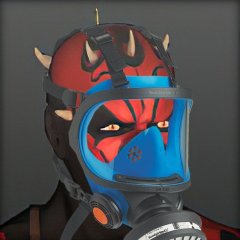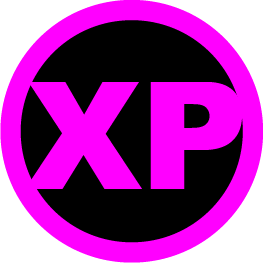-
Content Count
4,771 -
Joined
-
Last visited
-
Days Won
544
Content Type
Profiles
Forums
Blogs
Forum & Tracker Requests
Downloads
Gallery
Store
Calendar
Everything posted by DarthParametric
-

Request mod to have Kreia wear Atris robes
DarthParametric replied to LadyTevish's topic in Mod Requests
They use a bit of hack there. The pre-cutscene Kreia is a placeable that points to the P_KreiaStunt model. When you loot the corpse they do a switch to the character Kreia. You can see some info related to the switch here. If you wanted to replace that you'd need a full body model (i.e. body and head), since placeables can't handle multi-part models in the same way as creatures. -

Request mod to have Kreia wear Atris robes
DarthParametric replied to LadyTevish's topic in Mod Requests
The "Party_NPC_Kreia_Evil" appearance row is what the post-betrayal/Malachor Kreia uses. P_KreiaEvilBB is the model, although I don't recall it actually being different from the regular Kreia body model aside from the different texture. You can edit that row the same way the regular party appearance rows are. Note that there are also the Party_NPC_Kreia_Stunt, Party_NPC_Kreia_Seppuku, and Party_NPC_Kreia_Evil_No_Hands rows. I think the stunt one is used when she wakes up on Peragus (and possibly in other cutscenes), the seppuku one is for the cutscene on Dantooine that was cut in vanilla but restored by TSLRCM where she stabs herself, and the no hands one is for the post-fight on Malachor. My body models mod doesn't edit any of those rows, as noted in the readme. Most/all of them have attached stunt animations, so replacing them with models that lack those anims could cause issues. That KSE list is its inventory editor. -

Request mod to have Kreia wear Atris robes
DarthParametric replied to LadyTevish's topic in Mod Requests
Evil robes? You mean the Atris Disney villain robes with the funny hat? That's a whole other model. -

Request mod to have Kreia wear Atris robes
DarthParametric replied to LadyTevish's topic in Mod Requests
Texture variant is determined by the UTI. For clothing, from KSE: Some of those UTIs are broken, but for the ones that work, if you equip them in-game: As long as you have 01, 02, 03, etc. variants for your Atris textures in the Override then those will work the same way, pointing to whatever texture variant the UTI specifies. If the texture doesn't exist, it falls back to using texture variant 01. As far as head textures go, typically for the base texture a head will use the texture specified in the model. However, for TSL Obsidian added the "alttexture" column to heads.2da which allows you to specify an override texture. Then for player/party heads you obviously have the Dark Side transition textures, although for Kreia those shouldn't apply since she is forcibly set to neutral. So if you are using an added Kreia head, edit heads.2da in your Override and add P_KreiaEvilH to the alttexture cell for that added row. Appearance.2da will tell you what the row number is (the number in the "normalhead" column). But if it's added by a mod it will be towards the bottom. -
You're missing some Visual C++ redistributables. Go here: https://learn.microsoft.com/en-us/cpp/windows/latest-supported-vc-redist?view=msvc-170 and download both the x86 and x64 installers. If it still complains after that, it probably wants the 2012 package, which you can get separately here: https://www.microsoft.com/en-us/download/details.aspx?id=30679
-
It should also be noted that K1CP doesn't make any material changes to the structure of that quest. We edit Handon's appearance, swap out the placeable corpse for a creature-based one, force Handon to play an injured animation, and change the exit scripts for both Handon and Rickard at the end of the quest, but don't touch any of the progression/states at all.
-
That module has scripts with special characters (+, -, etc.) in the filenames. Those get broken when using the older version of TSLPatcher. K1CP's version does not cause this issue, so I would suggest the root cause is something you installed afterwards. I routinely test that quest when beta testing a new version and haven't encountered the problem you describe when only using K1CP.
-
Obsidian added additional bones to the rigs for most of their new models, primarily the robes. Those obviously aren't going to work without TSL-specific supermodels and animations, which JC has ported to K1. The question is whether the internal supermodel node references remain consistent between the games in the binary model. Since KBlender compiles a binary blindly, any differences will cause that model to break in-game. Because MDLEdit and MDLOps work from ASCII models that don't contain any supermodel node references, they require the presence of the binary supermodel to compile against, determining the correct node values by reading that model during compile and matching by bone name. That allows the correct nodes to be used, as long as you compile against the correct supermodel. It's highly probable that JC's ported supermodels have differing node values from TSL for the added bones, thus causing KBlender-exported models to break. You should be able to manually edit this in KBlender by editing the node number value in the "KOTOR Model Node" properties panel per bone. You'd have to load up the supermodels first and note all their bone node numbers, then check that against your ported models and correct where appropriate. Note that every node number needs to be unique, so any non-bone objects/meshes may also need to be adjusted to avoid conflicts.
-

Fair Strides' Script Shack
DarthParametric replied to Fair Strides's topic in General Kotor/TSL Modding
Well there's no need for any of that setup if you are just doing the same thing regardless. Have you ensured that all your values are valid? The added feat exists? The TLK strref exists? The icon exists? -

Fair Strides' Script Shack
DarthParametric replied to Fair Strides's topic in General Kotor/TSL Modding
GetPCSpeaker will just grab the player controlled character that is the DLG listener. I think it's probably a holdover from NWN that doesn't really work the same in Odyssey because there is only ever one player. To cover all companions you'd need a function to do a check of which one you are talking to and then apply the appropriate feat/s (or whatever it is you want to do). Possibly something like GetTag(OBJECT_SELF) - assuming the companion is the DLG owner - and then a series of if statements to run through each case. -

Request mod to have Kreia wear Atris robes
DarthParametric replied to LadyTevish's topic in Mod Requests
If you have a mod with lots of different variants then you can make use of those for the different clothing UTIs. For example, DP_AtrisBA01, DP_AtrisBA02, etc. (if you follow my naming scheme). Of course you can edit the 2DA and change the texture naming scheme to whatever you want, and/or extend it to use the Atris robes model for the other body types which will also make use of texture variants. -

Request mod to have Kreia wear Atris robes
DarthParametric replied to LadyTevish's topic in Mod Requests
I don't know what Atris robes you were using, but if it was the vanilla texture then that was probably the issue, since it lacks a variant number which is expected from appearance.2da entries. - i.e. the vanilla texture name is just P_AtrisBA, so if you put that in appearance.2da then it will look for a texture named P_AtrisBA01. I just did a fresh Windows install the other day, so I don't have everything back up to speed yet. Didn't have TSL reinstalled yesterday, but after getting that sorted, here's a quick test using my Kreia body model mod as a basis: Simply loaded the Atris model into KBlender, lopped off the head, saved it out as a new model, then lopped off the left hand and saved that out to a second model. I can set up an installer for you to replicate what I have here, but whether it will work for you or not may depend on how you have her set up already. Edit: Uploaded the installer as an optional extra on my Kreia Visible Body Models mod's page. -

Request mod to have Kreia wear Atris robes
DarthParametric replied to LadyTevish's topic in Mod Requests
It's not too hard to edit the model to create a custom one-handed version. With the advent of KBlender you can do it all in a single tool since it can load and export binary models directly, although that means dealing with KBlender's wacky UI and conventions. As to the appearance.2da edits, Kreia should have a few different rows for her various party and stunt versions. The main thing will be editing the appropriate columns with the correct model and texture values. What those will be will depend on what mod for the Atris robes you are using. -

Request mod to have Kreia wear Atris robes
DarthParametric replied to LadyTevish's topic in Mod Requests
Trying to replace models by simply renaming them is generally a bad idea. If you already have a mod that gives Kreia regular body models and another that provides equippable Atris robe body models, then simply manually editing appearance.2da yourself is the quickest route to achieving what you want. Although obviously she'll still have two functional hands without a custom model that lops one off for her post-Peragus row. -

Rukil's Apprentice - Recruitable Malya
DarthParametric replied to HelloWeasel's topic in Work In Progress
Lip sync is fairly trivial to generate once you know how to do it, it's just extremely laborious and clunky because of the archaic toolchain required. This tutorial should give you the gist of it. Although it's a bit outdated now. Grab this version of CSLU Toolkit from DS. There's also this alternative option, but I've never tried it myself. -
I had a quick play with using stencils in Blender. It's a bit fiddly due to the UV distortion, but with a bit of trial and error I think you could get it pretty close. It might be easier to do the arrow head and the line as two separate stencils. Here's a video that covers the basics of using stencils - https://www.youtube.com/watch?v=urUdMbO4E2c&t=155s Edit: OK, I played around with it some more. Try these on for size: Game-ready textures, source masks, and Blender file attached: Malak Airbender_Source.7z
-
-
-
- 13 comments
-
- 1
-

-
Placeable sitters use the regular N_Rodian model, so as long as one of Stormie's model additions replaces that then no further action is required. As to corpses, I don't think there are any placeable Rodian corpses, are there? The only alien ones are Twi'leks and Wookiees as far as I know. Anything else is presumably just a regular UTC with a spawn dead OnSpawn script. So that should work seamlessly with the vanilla appearance row replacements.
- 13 comments
-
-
- 13 comments
-

Npc overhaul and community patch compatability patch
DarthParametric replied to Revanbeta50's topic in Mod Requests
Chances are nobody is going to volunteer, but you might improve your chances if you provide some actual useful detail. List all the problems that occur. -

Npc overhaul and community patch compatability patch
DarthParametric replied to Revanbeta50's topic in Mod Requests
Install NPC Overhaul first and it should probably be fine. -
I wonder if you should swap the clothing for the last two. The current arrangement doesn't seem to have enough contrast with the skin colour.






